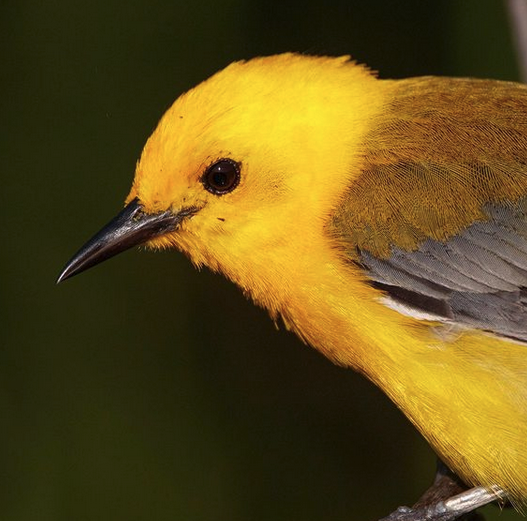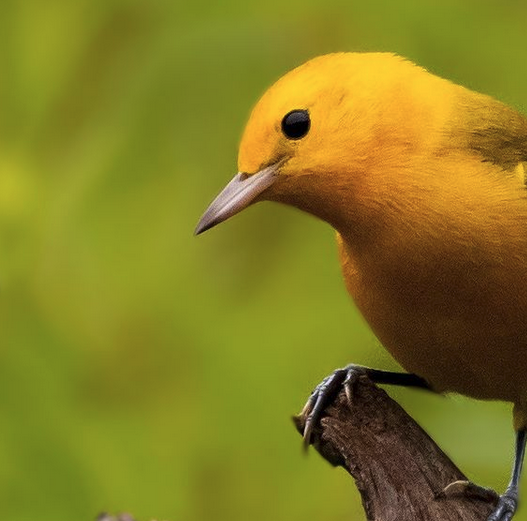Autumn will soon be here.
Signs of change are everywhere if you know where to look. From flocking Canada Geese to molting plumage, birds everywhere are preparing themselves for the migration journey ahead.
Some changes aren’t so obvious, yet if you take the time to look closely you’ll be able to pick up on the seasonal cues even before cold weather arrives.
Case in point, the beak color of a Prothonotary Warbler.
During the spring & summer this warbler has a bright black beak. In autumn and winter it is a tan color.
The change happens quickly too!

I took photo of a Prothonotary with the black bill (featured in the first photo) late last month.

The second photo shows a Prothonotary with the tan beak just last weekend.
Can you see the difference?
But how does a Prothonotary Warblers beak change color?
Their beak is covered in keratin, the same substance from which our hair and fingernails are made from.
Under the beak’s layer of keratin lies a bony structure. While the bone makes up the foundation, it’s covered with a layer of living tissue which, in turn, is coated with a thin layer of see-through keratin. These living cells can change color, and the color shows through the keratin.
Seasonal color changes to the living tissue in their bills occur due to fluctuations in the birds hormone levels and diet throughout the year.
Now that the Prothonotary’s breeding season has ended, their hormones levels have changed again so their beaks have returned to a light tan color.
These beauties will stick around North Carolina until early September before heading south to their wintering grounds in Central America and northern regions of South America.
Enjoy them here in the Tarheel state for a couple weeks because they won’t be back until April.
Photos by @sally_siko of @birdwatching_nc on the mighty @canonusa
#R5 & #5Ds
